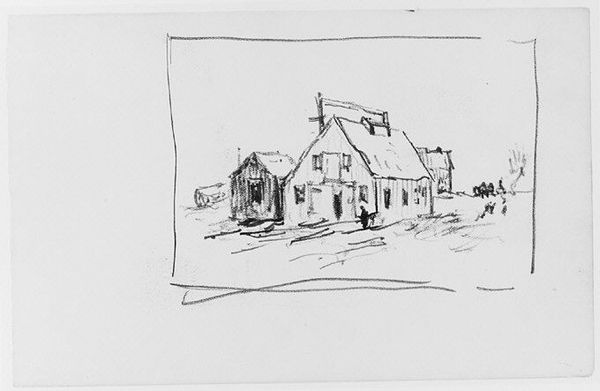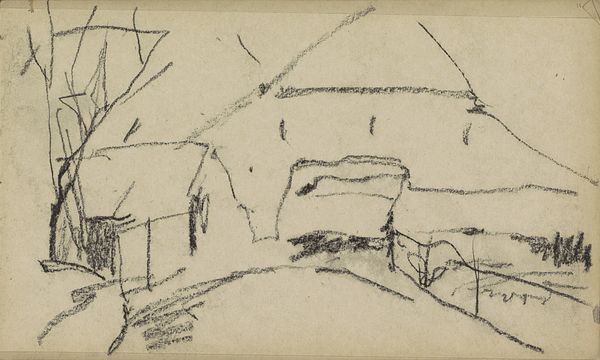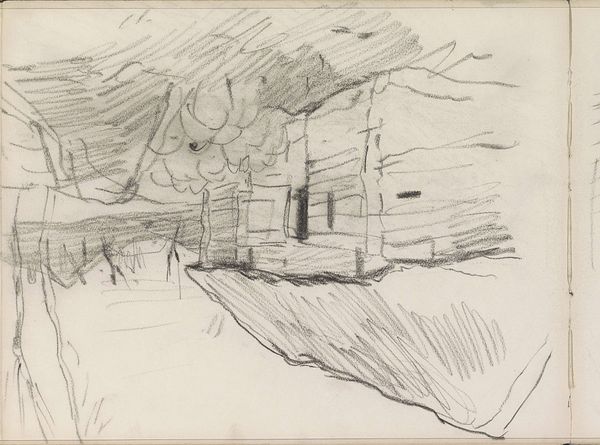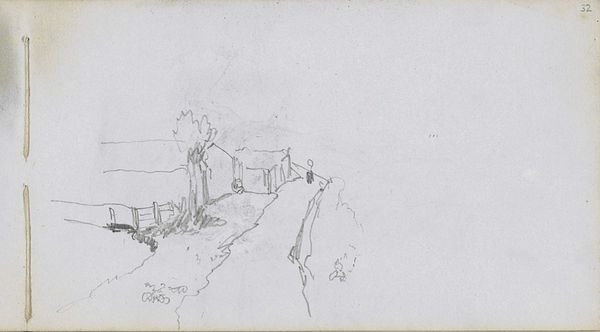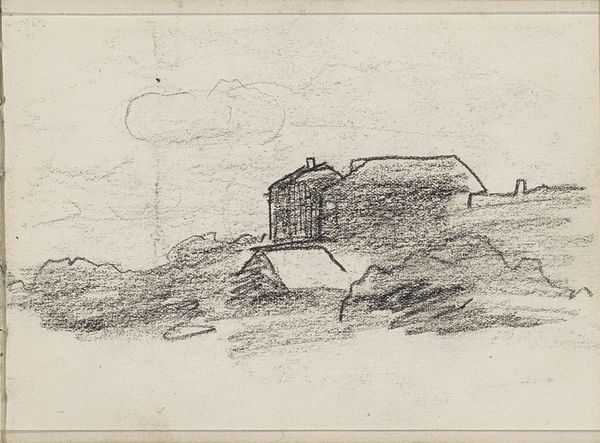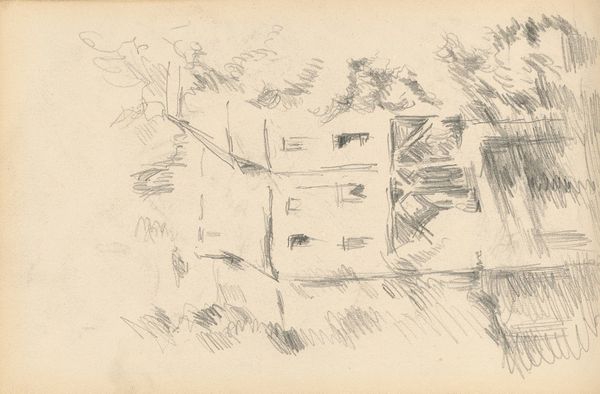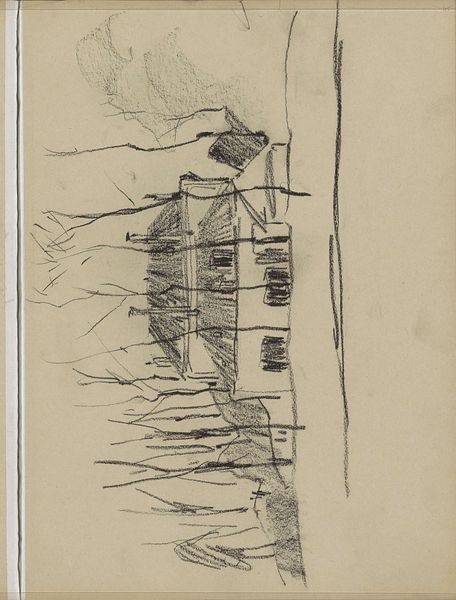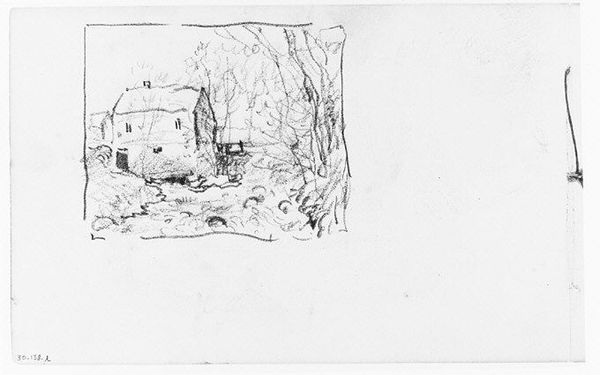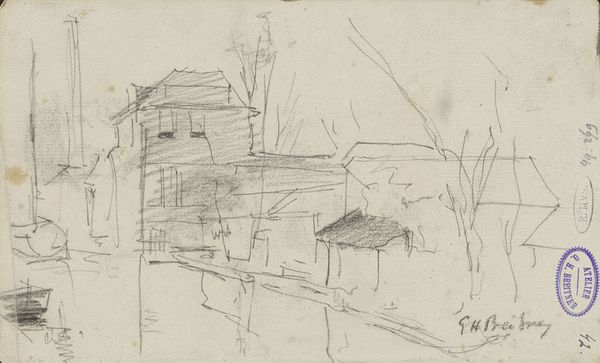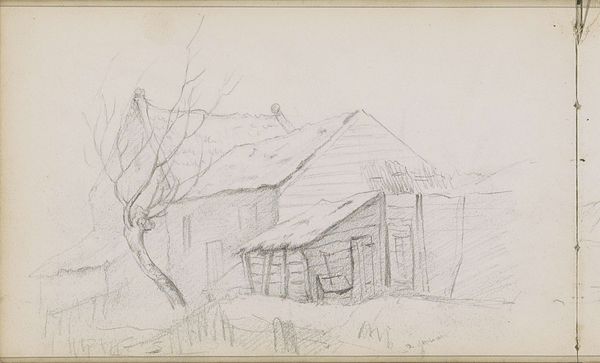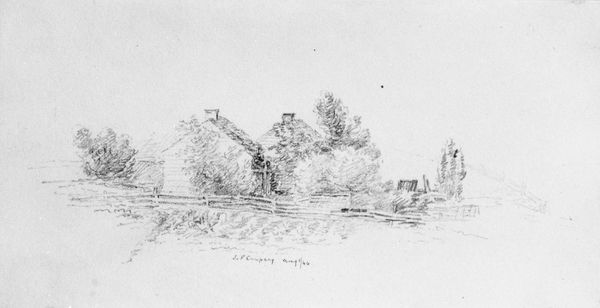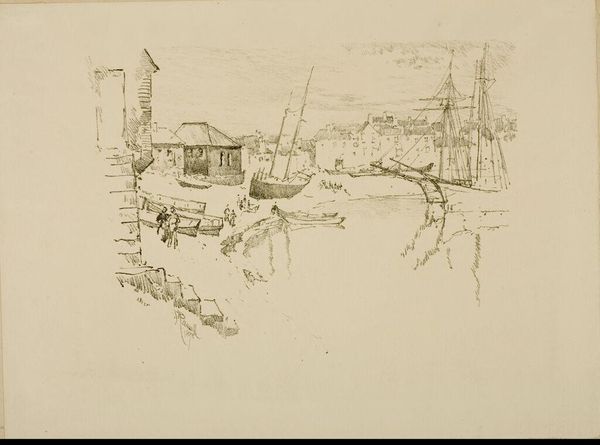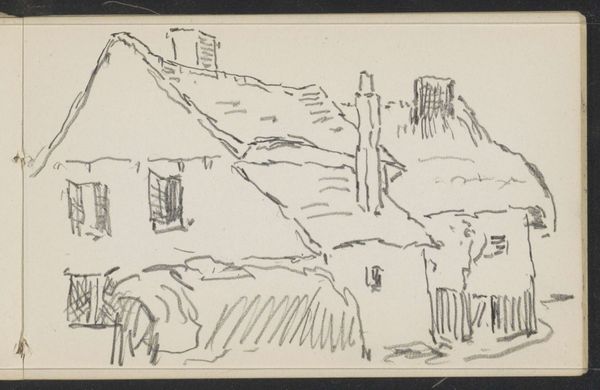
View of House by Waterfall (from Sketchbook) 1858 - 1916
0:00
0:00
drawing, ink, pencil, pen
#
drawing
#
ink drawing
#
pen sketch
#
landscape
#
etching
#
house
#
ink
#
sketch
#
pencil
#
pen
#
cityscape
Dimensions: Sheet: 4 7/8 x 7 7/8 in. (12.4 x 20 cm)
Copyright: Public Domain
Curator: Before us we have "View of House by Waterfall (from Sketchbook)", attributed to Henry Ward Ranger, created sometime between 1858 and 1916. It’s a drawing using pen, ink and pencil. Editor: It has a rather haunting quality, doesn’t it? The rapid, almost frenetic lines suggest movement and instability. I notice especially the ambiguous spatial relationships between the house, the landscape, and that suggestion of falling water. Curator: Indeed, Ranger's swift strokes generate a compelling sense of depth. The use of hatching and cross-hatching provides subtle tonal variations, implying texture without explicit detail. Notice, too, how the linear composition directs the eye; it keeps moving around and never really settles. Editor: I am curious, though, about the role this image played within the sketchbook itself. Was it a preparatory sketch, a fleeting impression captured en plein air? Given its existence within a sketchbook, it seems less a statement than an exploratory observation. We lack crucial context on its intended use by the artist and its function to society. Curator: From a formalist perspective, the intended purpose holds secondary significance to the resolved aesthetic experience it offers. Consider how Ranger manipulates positive and negative space – how the white of the paper actively participates in shaping forms. Furthermore, it embodies the inherent qualities of sketching through line as fundamental. Editor: True, and it brings to mind broader themes: of man's relationship to nature, maybe, especially that tension evident between shelter and precarity? It also poses questions of private versus public art consumption—sketches are private ideas given public life only later. It raises the status and accessibility of art objects and practices to those outside the museum and gallery. Curator: What fascinates me most remains how this drawing functions as a study in itself. The efficiency with which Ranger evokes volume, light, and even atmosphere through relatively few gestural lines is remarkable. It also underscores the power of simplicity. Editor: I agree. Seeing a quick study prompts thoughts on artistic intention, what's worth preserving and how the history and socioeconomics influence art as object.
Comments
No comments
Be the first to comment and join the conversation on the ultimate creative platform.
